How to Simulate Hiking on a Treadmill
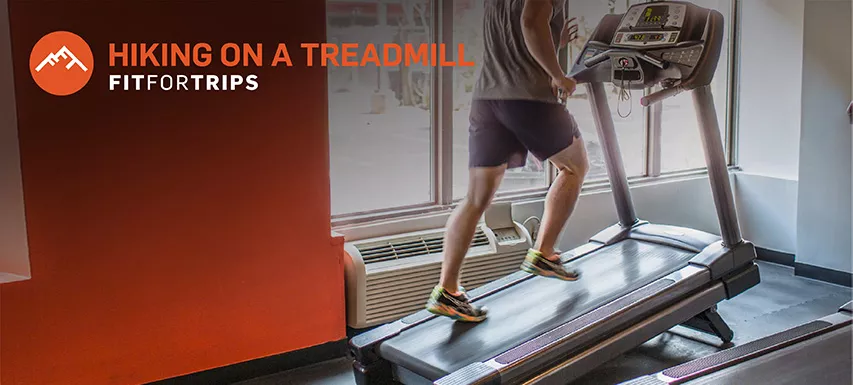
This article will discuss how to maximize treadmill training for hikers. We’ll cover three reasons (with some training examples) why you would use a treadmill to boost your hiking ability.
There are three primary ways to simulate hiking on a treadmill:
-
- Use the incline feature to simulate uphill hiking
- Use the treadmill to promote consistency when you can’t get outside to hike or walk
- Use the treadmill to supplement the total distance you need to walk per week
This article is written knowing that many hikers book a bucket list trip and oftentimes need to simulate hiking on a treadmill for a portion, or sometimes all of their training. It’s always advisable to hike on terrain that – as close as possible – will best simulate your destination.
Many of you live in a flat part of the country and need to use the treadmill to simulate uphill hiking. Your Achilles tendon, calf muscles, and plantar fascia (just to name a few areas) need an angled surface to lengthen, strengthen, and develop the ability to tolerate thousands of steps at incline.
1. Use the incline feature to simulate uphill hiking
Hiking trails are generally cut to max out at 10% incline (incline is also known as “grade”). Therefore, it is recommended to hike on the treadmill at a range from 8%-12% incline to get the best results.
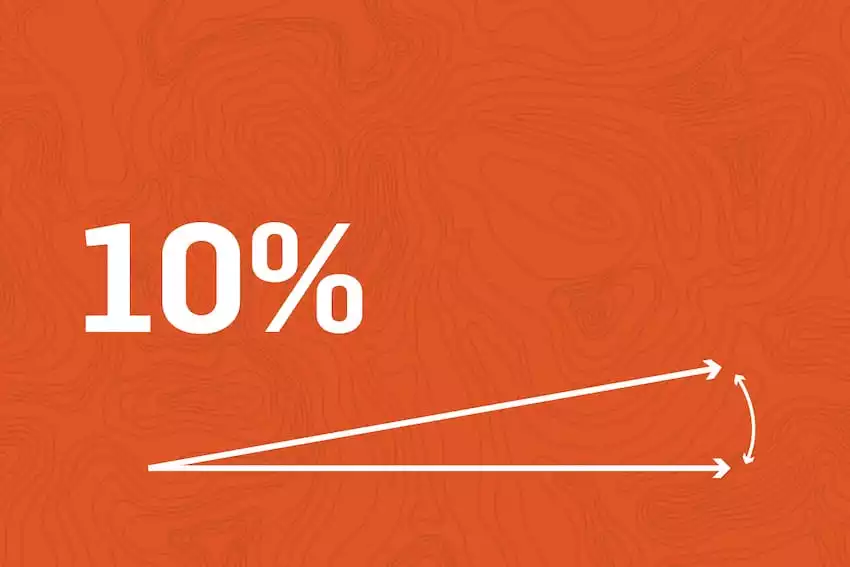
Treadmills just about always max out at 12%-15% incline, although there are some that go as steep as 40%.
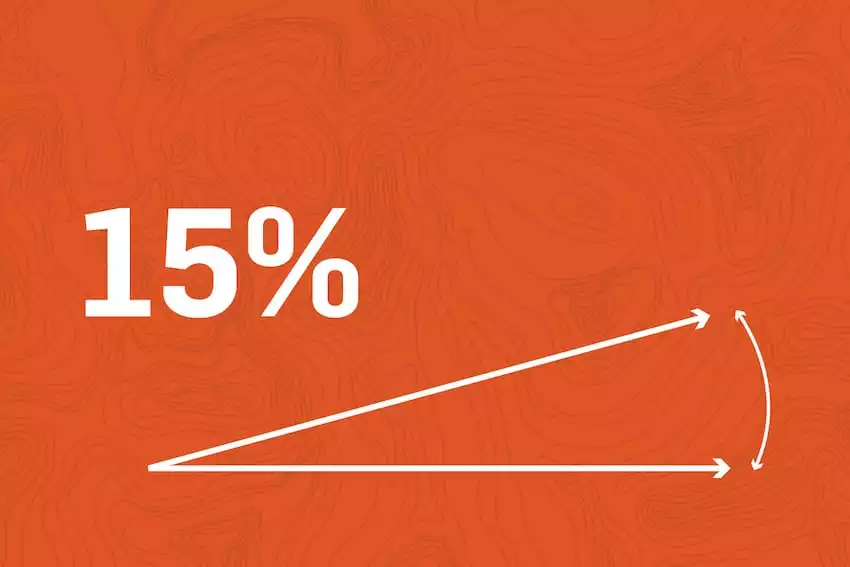
Will Burkhart, owner of Badass Adventures, provided a perspective on grades of some iconic hikes: “If your trip is on older trails, you should note that they tend to be steeper. Examples include most Colorado 14ers above tree line (11,000 feet or higher) when moving thru boulder fields and scree. The rim-to-rim trail in the Grand Canyon is generally below a 10% grade, but on the North Kaibab trail, it can get as steep as 15-20% in some sections.”
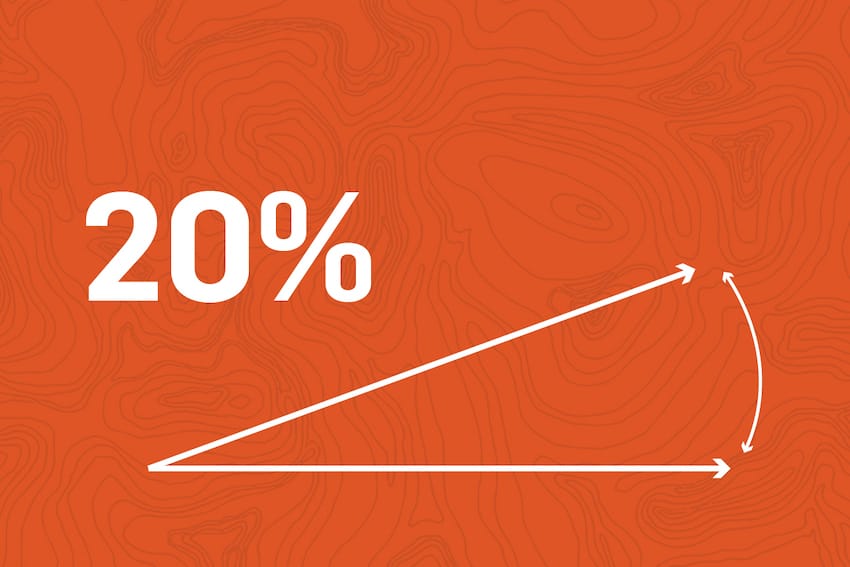
Some hiking trails, such as the infamous Incline in Manitou Springs, Colorado, climb at 40% grade. The incline hike averages a 41% grade over a distance of a mile and maxes out at a 68% grade! I asked Will when he notices most of his hiking clients begin to scramble vs. hike: “Usually 60+ %, but it has a lot to do with the hiking surface, like if it’s loose rock, etc.”
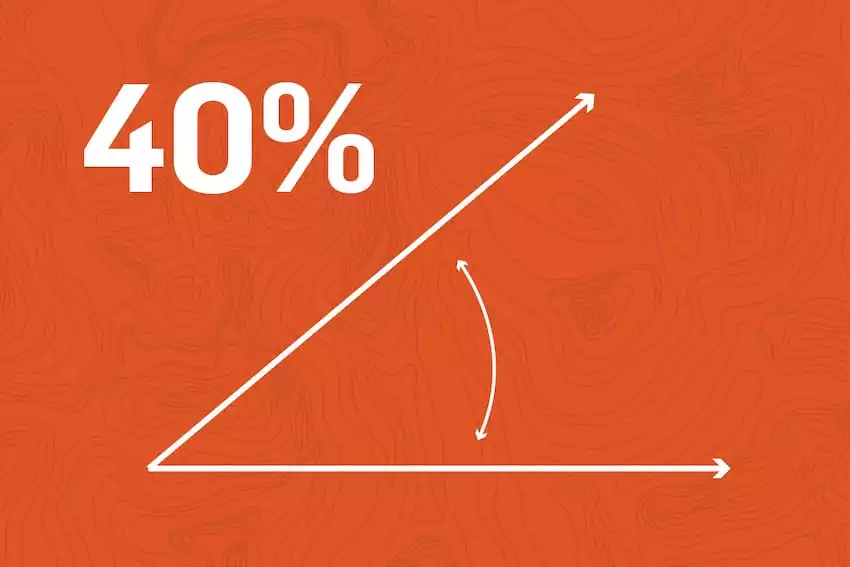
Hiking on an inclined treadmill workout idea #1
All three examples below require you to walk for 3 miles on the treadmill. The first, second, and third example require you to walk at a 5%, 10%, and 15% incline, respectively. In each case you will achieve a virtual elevation gain goal. The images below will help you understand:
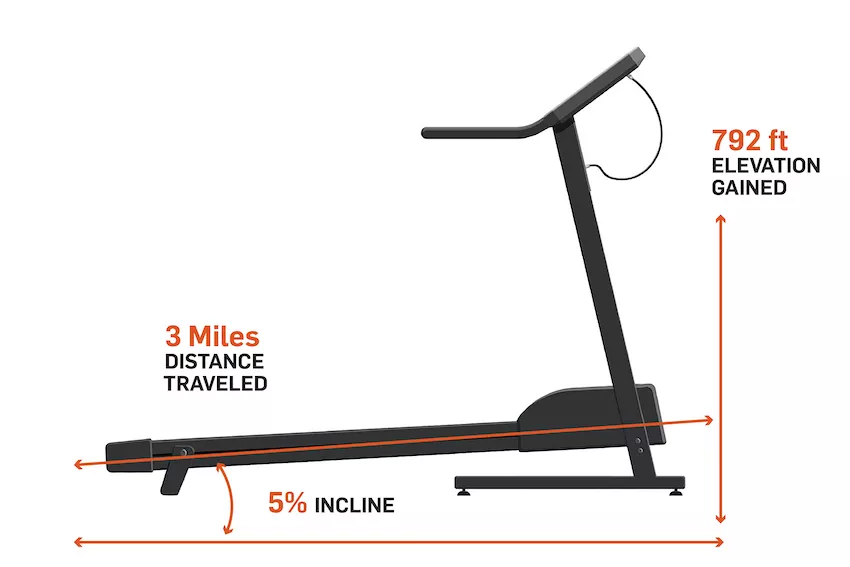 Hike on a treadmill for 3 miles at 5% incline to simulate an elevation gain of 792 feet (241 m)
Hike on a treadmill for 3 miles at 5% incline to simulate an elevation gain of 792 feet (241 m)
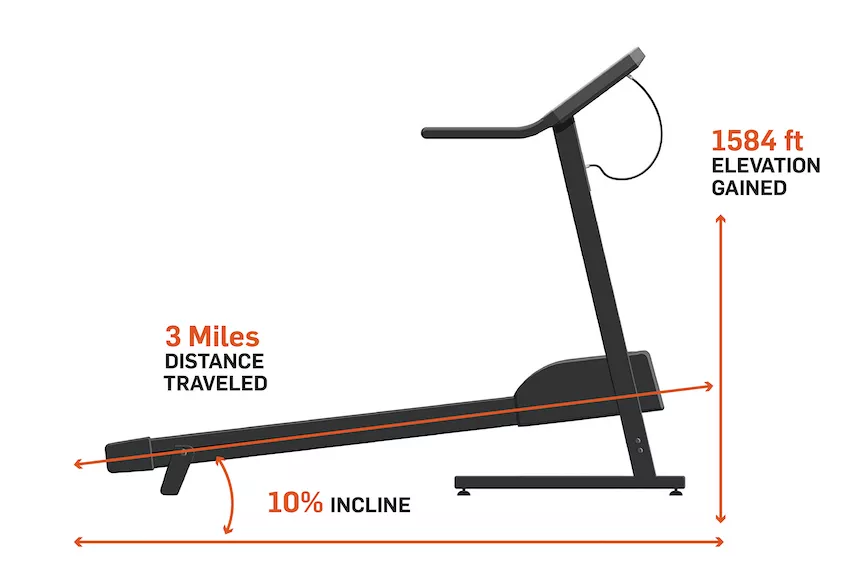 Hike on a treadmill for 3 miles at 10% incline to simulate an elevation gain of 1,584 feet (483 m)
Hike on a treadmill for 3 miles at 10% incline to simulate an elevation gain of 1,584 feet (483 m)
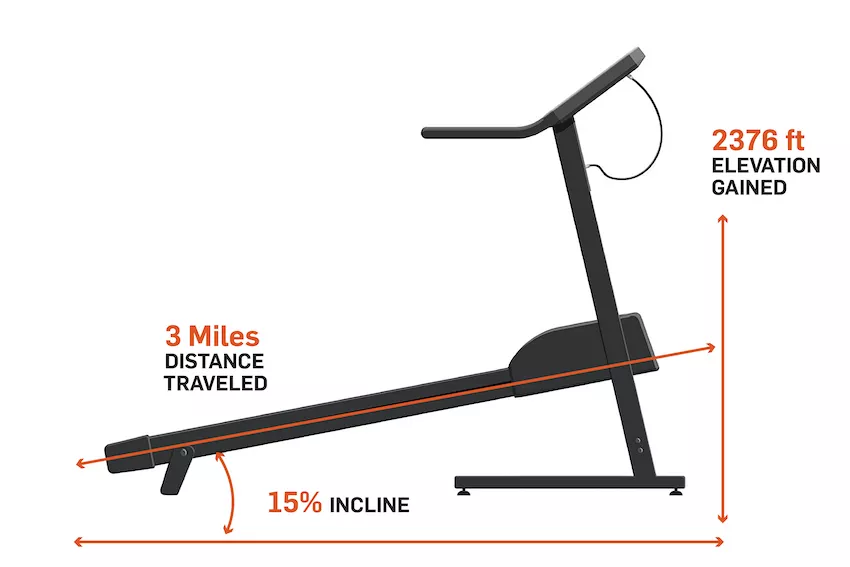 Hike on a treadmill for 3 miles at 15% incline to simulate an elevation gain of 2,376 feet (724 m)
Hike on a treadmill for 3 miles at 15% incline to simulate an elevation gain of 2,376 feet (724 m)
Hiking on an inclined treadmill workout idea #2
All three examples below simulate a virtual elevation gain total of 1500 ft (457 m). The first, second, and third examples require you to train at a 5%, 10%, and 15% incline, respectively. In each case you will achieve the same virtual elevation gain goal. The images below will help you understand:
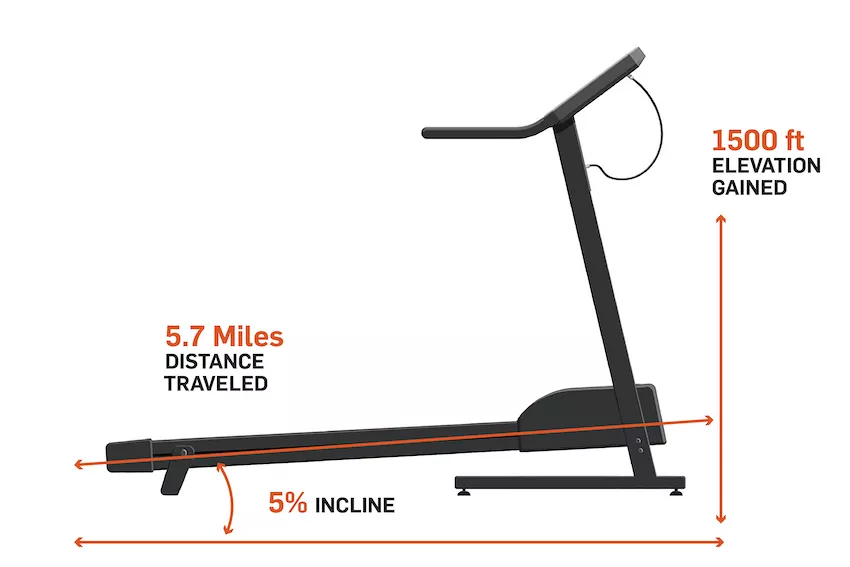 Simulate hiking on a treadmill for 5.7 miles at 5% incline to achieve an elevation gain of 1500 ft (457 m)
Simulate hiking on a treadmill for 5.7 miles at 5% incline to achieve an elevation gain of 1500 ft (457 m)
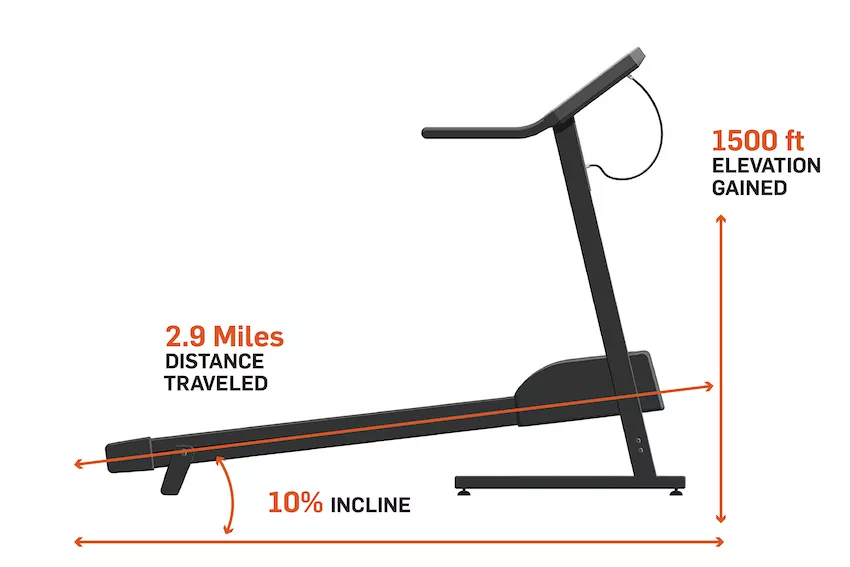 Simulate hiking on a treadmill for 2.9 miles at 10% incline to achieve an elevation gain of 1500 ft (457 m)
Simulate hiking on a treadmill for 2.9 miles at 10% incline to achieve an elevation gain of 1500 ft (457 m)
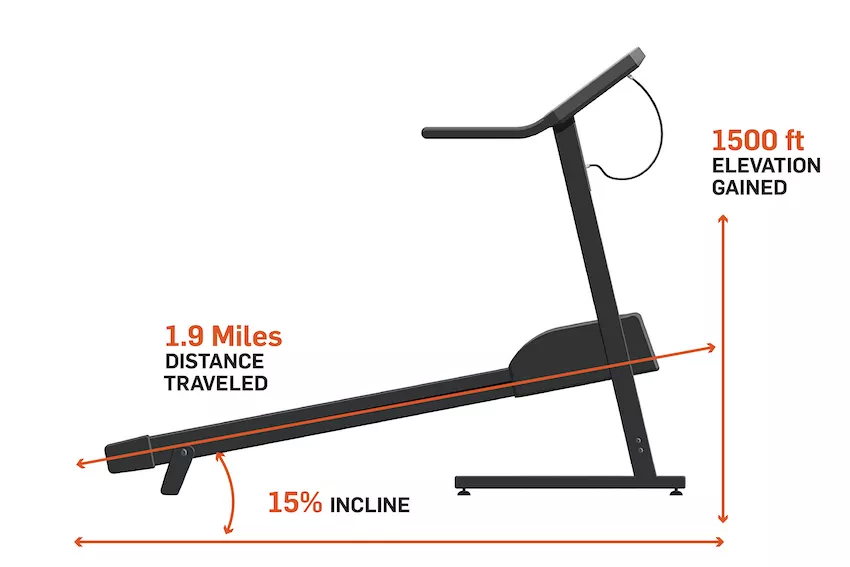 Simulate hiking on a treadmill for 1.9 miles at 15% incline to achieve an elevation gain of 1500 ft (457 m)
Simulate hiking on a treadmill for 1.9 miles at 15% incline to achieve an elevation gain of 1500 ft (457 m)
Have Fun with the Treadmill Elevation Calculator Below
Goof around by typing in different combinations of distances, inclines, and elevation gains in the Treadmill Elevation calculator:
Here is a practical application of the above examples:
Identify the elevation gain of your next hike and simulate it on the treadmill, or identify the most challenging incline section of the hike and simulate the climb.
In this example, let’s start by looking at the AllTrails app view of the Pigeon Hill to East and West Loop Trail. Take note of total elevation gain listed at 1,135 ft. Using the treadmill elevation gain calculator, I figured out that you can hike on the treadmill for 2.7 mi at an 8% incline to climb 1,135 ft of elevation gain.

Notice in the first 1.8 miles of the Pigeon Hill to East and West Loop Trail there is 760 ft of elevation gain. To determine the gain, you will subtract the elevation (1,039 ft) at the trailhead (0.0 mile marker) from the elevation (1,799 ft) at the 1.8 mile marker. The result is 760 ft of elevation gain from trailhead to 1.8 mile marker.
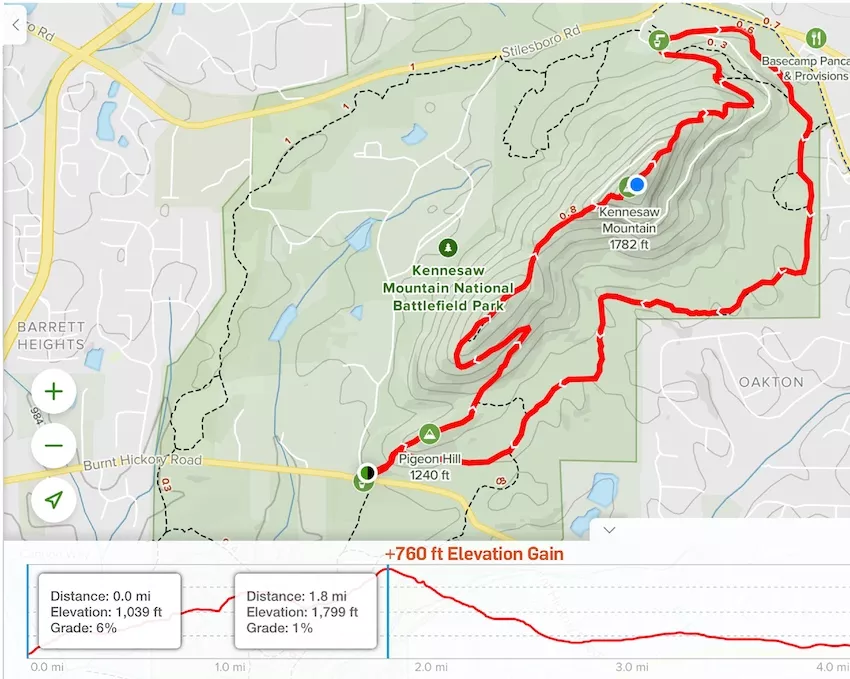
Plug 1.8 mi and 760 feet of elevation gain into the treadmill elevation gain calculator and the INCLINE result is 8% incline after you round off the number.
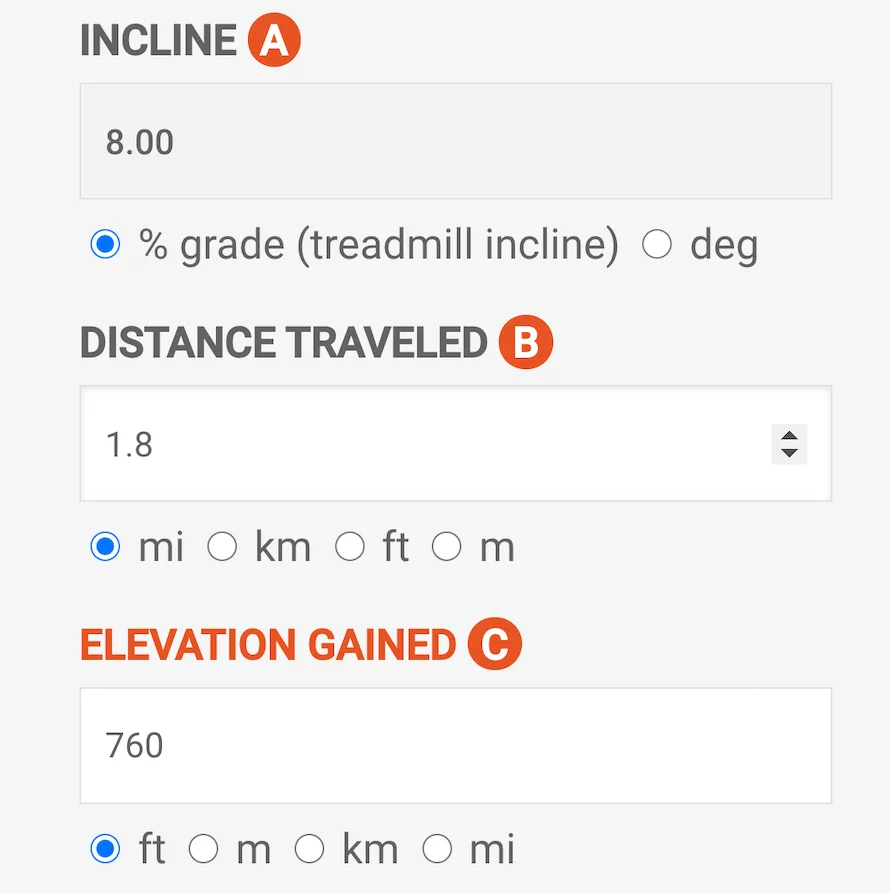 Using the example above, you can hike on a treadmill and simulate the climb following these steps:
Using the example above, you can hike on a treadmill and simulate the climb following these steps:
A – Warmup for 10 minutes or longer and gradually work up to an 8% incline, and then stop the treadmill
B – Restart the treadmill and raise the incline back up to 8% and walk for 1.8 mi
C – Stop the treadmill and hop off to walk around for a bit of a cool-down
*Add pack weight to make the workout more challenging
2. Use the treadmill to promote consistency when you can’t get outside to hike or walk
Let’s say your goal is to hike or walk a specific distance per week or to get a number of steps per week. However, if you are too busy, notice dangerous weather, or have to contend with poor air quality, you can simulate your hike on the treadmill instead. You can still accumulate distance and elevation gain.
When I was training for my 4 day/3 night backpacking trip in the Great Smoky Mountains National Park, I had distance and elevation goals to accumulate by departure day. My training goal over many weeks was a total of 40 mi hiking and 19,000 ft of elevation gain. Had I been unable to hike and perform stair workouts, I could have easily used the treadmill to continue to fulfill my distance and elevation gain goals.
3. Use the treadmill to supplement the total distance you need to walk per week
If you have an aggressive goal to accumulate miles and elevation gain, you can supplement your schedule with hiking on a treadmill. Perhaps you want to get a total of 10 miles on a Monday workday. You can hop on the treadmill in the morning before work while it’s dark and knock out a 5 mile walk. Then you can hike another 5 miles after work in the daylight before dusk.
Just in case you are wondering if you can you wear hiking boots on a treadmill…
It’s not recommended if you have aggressive lugs on the bottom of your hiking boots. The treadmill belt that your shoes are touching might get damaged as a result of the wear and tear from the hiking-boot outsoles. However, you can give it a go if you are wearing hiking shoes or trail running shoes that have small lugs. Otherwise, the time to break in your shoes is on your walks, hikes, and perhaps during your stair workout session.
I want to mention one caveat about hiking on a treadmill
Strictly hiking on a treadmill to improve your hiking ability is not optimal. If it’s your only choice, then it’s more important that you use it to simulate uphill hiking and accumulate the necessary training distances.
Combine the benefits of the treadmill (incline, consistency, and supplementation) with actual hiking and walking for best results.
Want to find out how you can get in shape for your next hike? Contact us today for a complimentary fitness consultation.

Maura Harding
This is really helpful! Really appreciate it as I try to stay in shape for future challenging trails. If I don’t get out in the early morning our trails can be busy.
Marcus Shapiro
It’s not clear how to use the treadmill for hiking training, which is why I published this article. Share the post with your hiking buddies. Great to hear from you Maura.
Rob S.
Great tips you shared here! The ways that treadmills work is great, especially for those looking to work out specific areas of their bodies. Having inclines not only simulate hiking but go a long way in building the thighs and glutes too.
Marcus Shapiro
Let us know if you use any of the tips or the treadmill elevation gain calculator. https://fitfortrips.com/calculate-elevation-gain-on-a-treadmill-hiking-workout/ Thanks for taking time to comment Rob.
Kevin Guzda
Great article! Do you have any recommended plans on using the stairclimber as well?
Marcus Shapiro
With regards to hiking I always recommend using real stairs for training over stairclimber. That being said you can use the stairclimber for HIIT (high intensity interval training). Step as fast as you can for 1 min / rest for 1 min by reducing the stepper to the slowest setting / repeat for a total of 10-15 times. I recommend HIIT whenever the hiking exceeds 10,000 to 12,000 feet.
Martha
This is really useful – thanks. When I do treadmill incline training, I watch videos from the Treadmill Trails app to provide motivation and beat the boredom. They’ve got Grand Canyon rim-to-rim and the North Kaibab Trail from river to rim and specific incline training videos shot in the Alps and elsewhere. Really helps to keep you going.